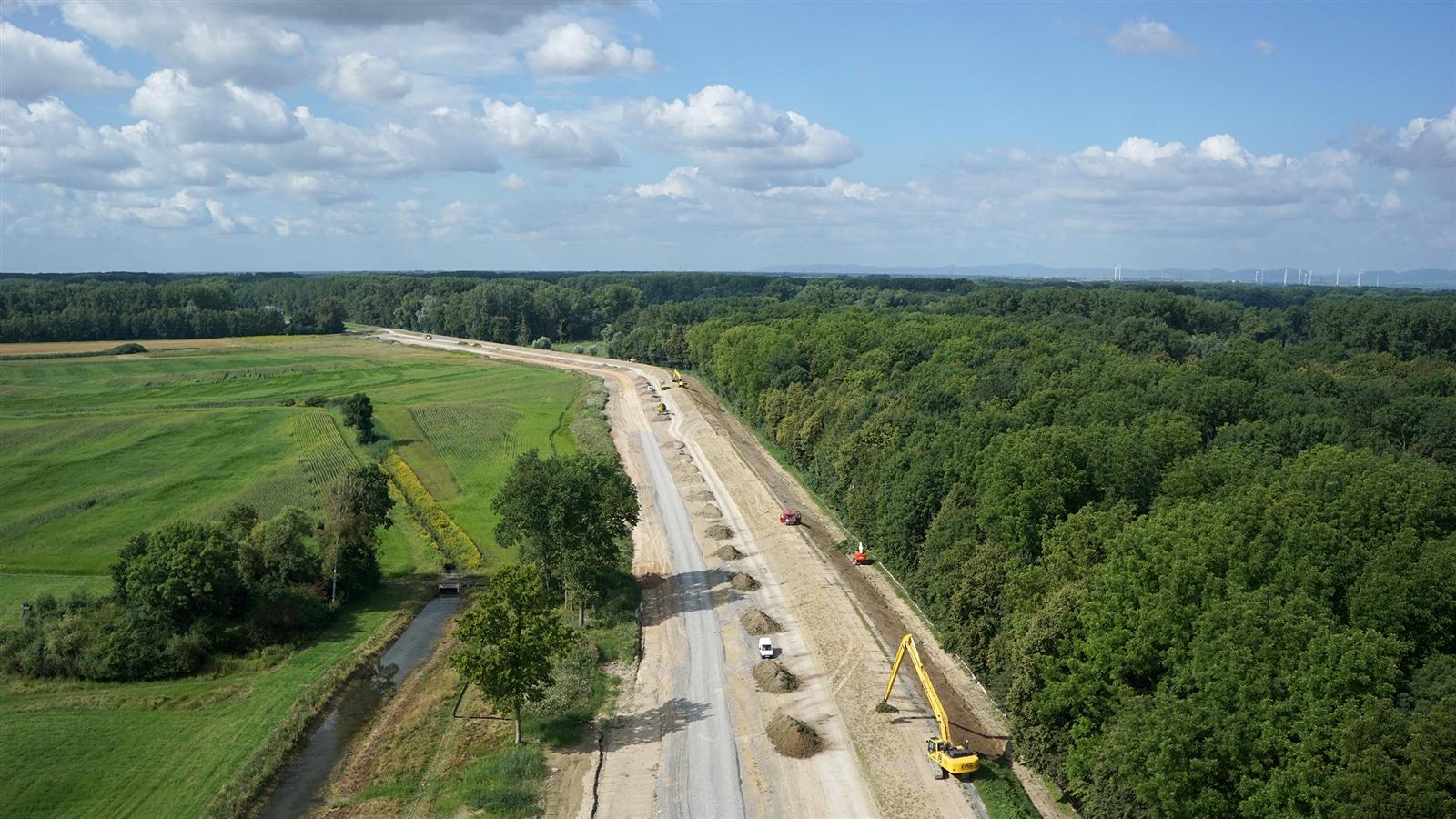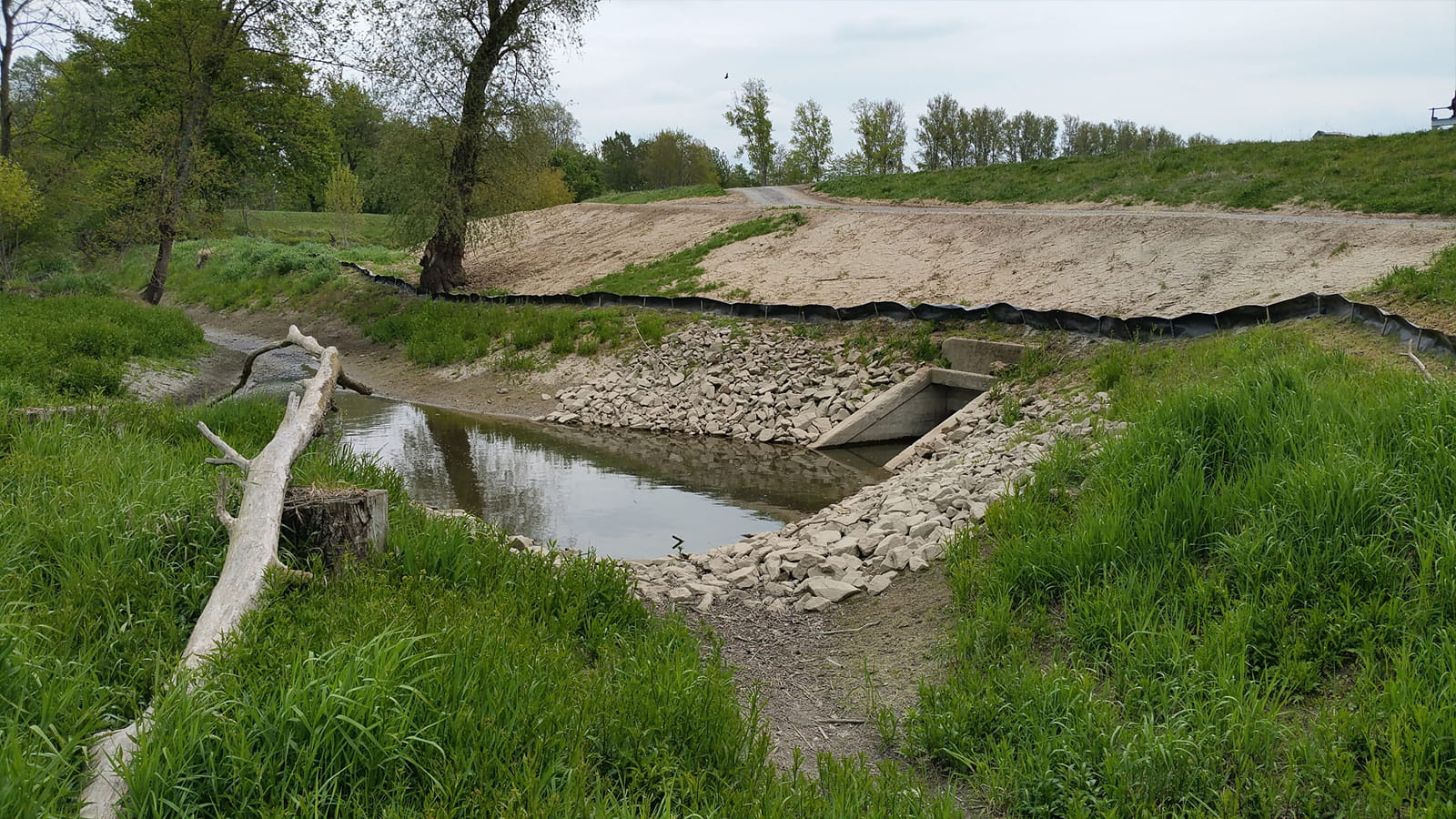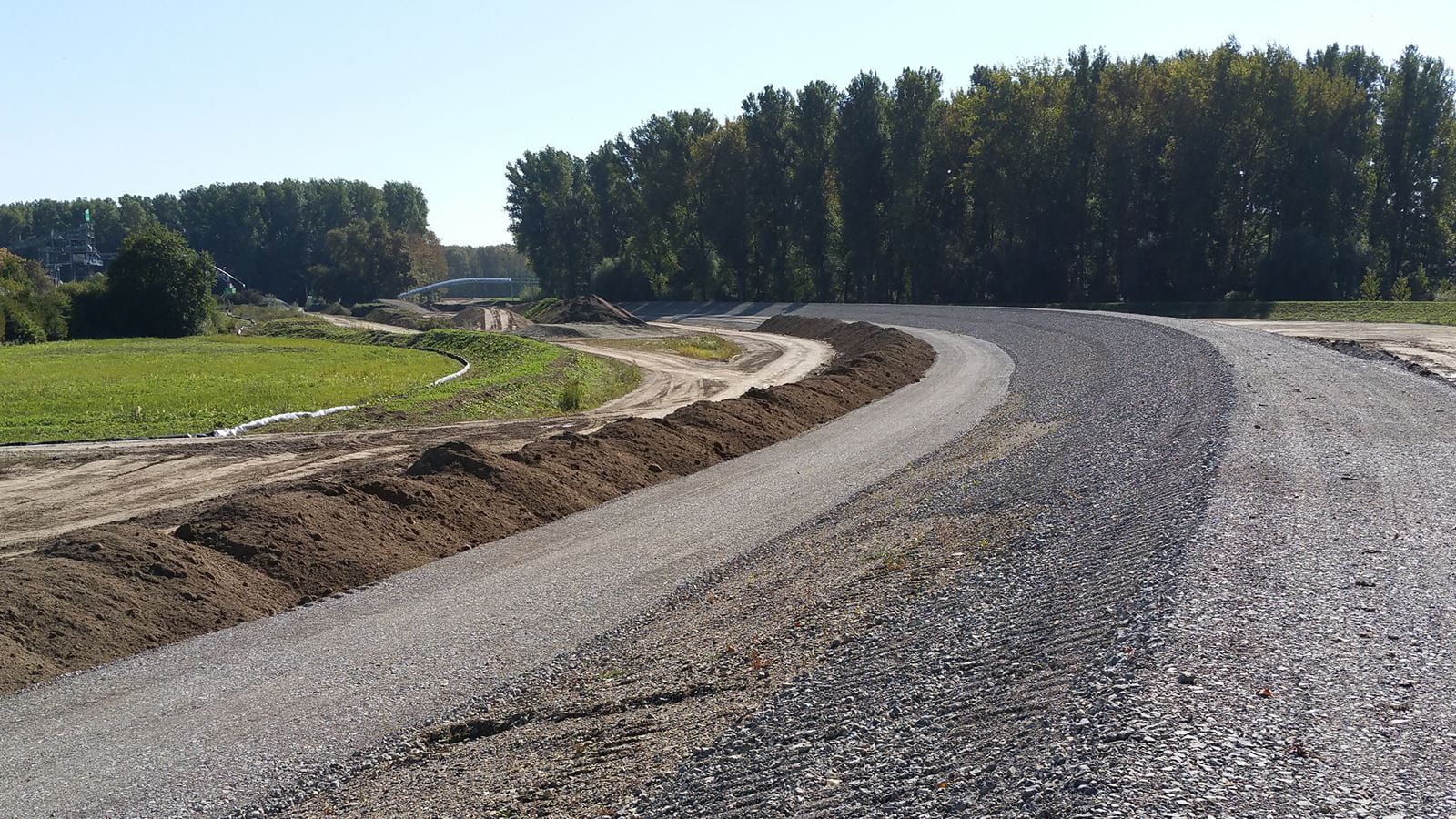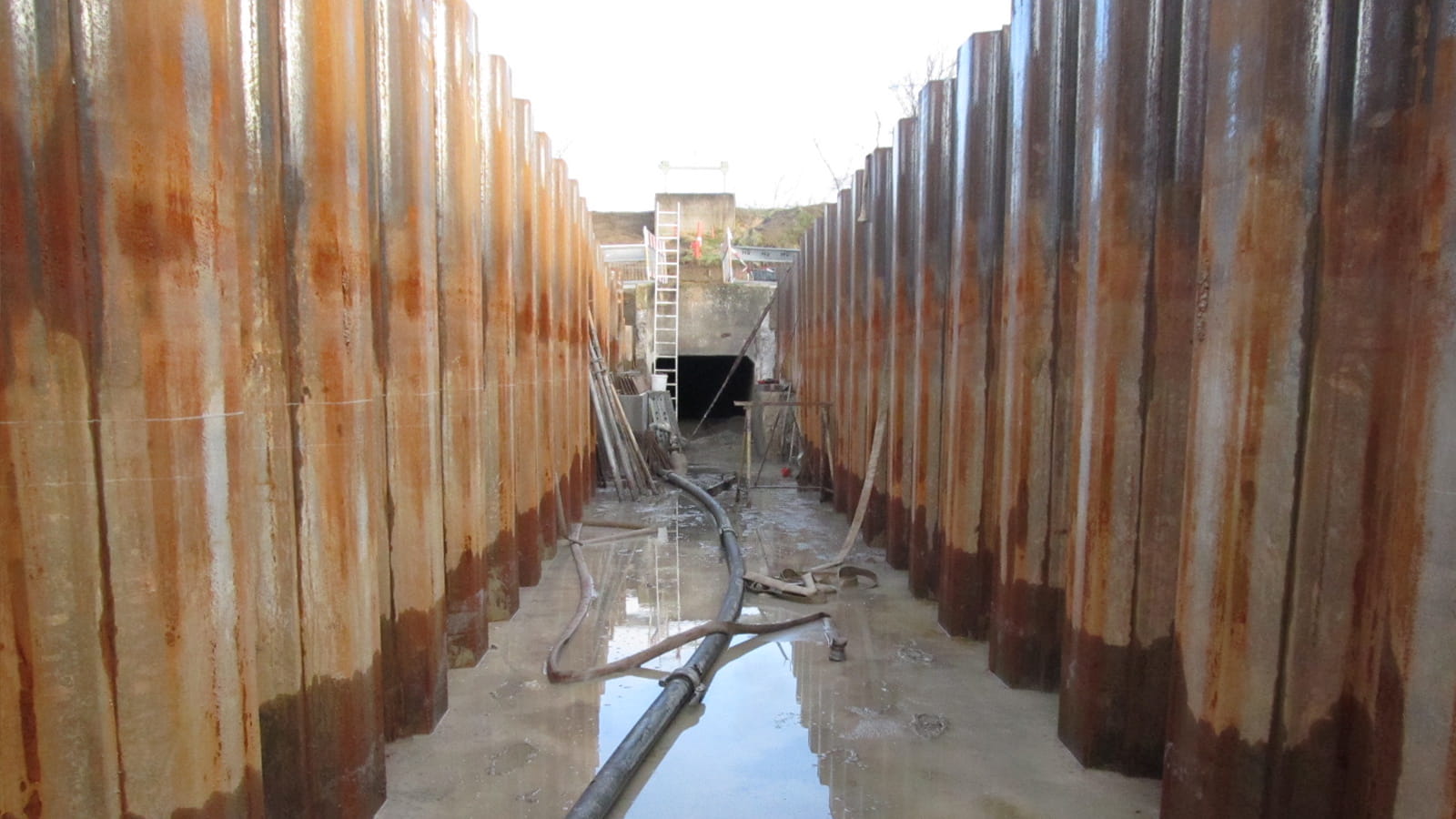Fit for the Millenium Flood: Rhine Flood Barrier is Remediated
CDM Smith was responsible for project planning, site supervision, health and safety coordination, structural design of buildings, and construction surveying for the flood barrier section stretching more than 10 km. The slopes had been widened and flattened with berms on the water and land sides to achieved greater stability with 80 cm freeboard – the vertical distance between the high water level and the top of the dam. In addition, seventeen bunkers and two disused pumping stations in the barrier’s cross-section were demolished.
Apart from dam remediation and demolition measures, two locks and a dam guardhouse as well as two service bridges had been built, and the Rhine lowland canal culvert had been remediated. In addition, the Pfinz stream bed was being moved about by 600 m into a near-natural position to make room for a wider embankment area.
Building activity in the Rheinaue Nature Reserve places special emphasis on the needs of habitat protection, soil management and tourism.
To protect nature, the dam remediation tooked place in eight separate phases at various times and locations. Now, after the construction project has been completed, the new flood barrier is more secure, reliable and effective at protecting an area of approximately 30 km² covering several Rhineland municipalities north of Karlsruhe from flooding.

A very important flood protection project for many localities along the Rhine.
Did you know?
The Rhine flood dam was built for the first time due to Tulla's Rhine regulation at the beginning of the 19th century. Following the Second World War it was extensively renovated during the 1950s. The last bunker remains in the cross-section of the dam as an additional stability risk.












